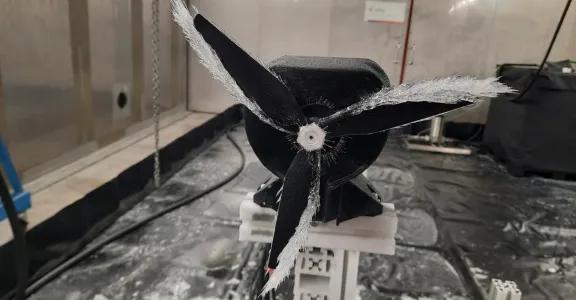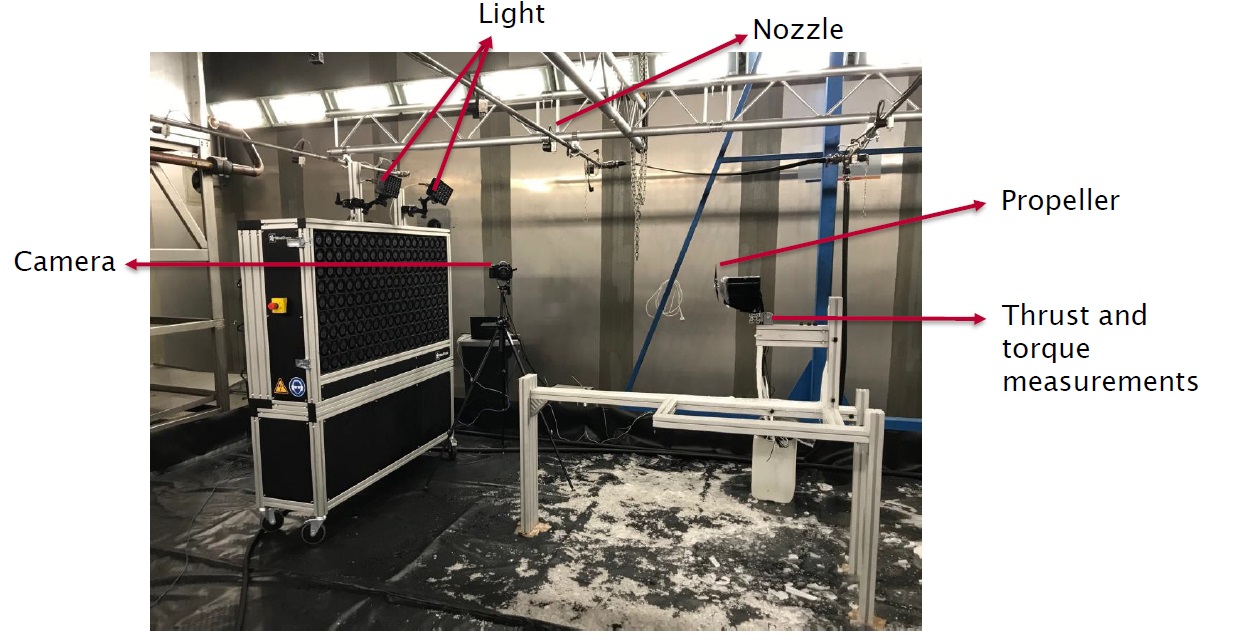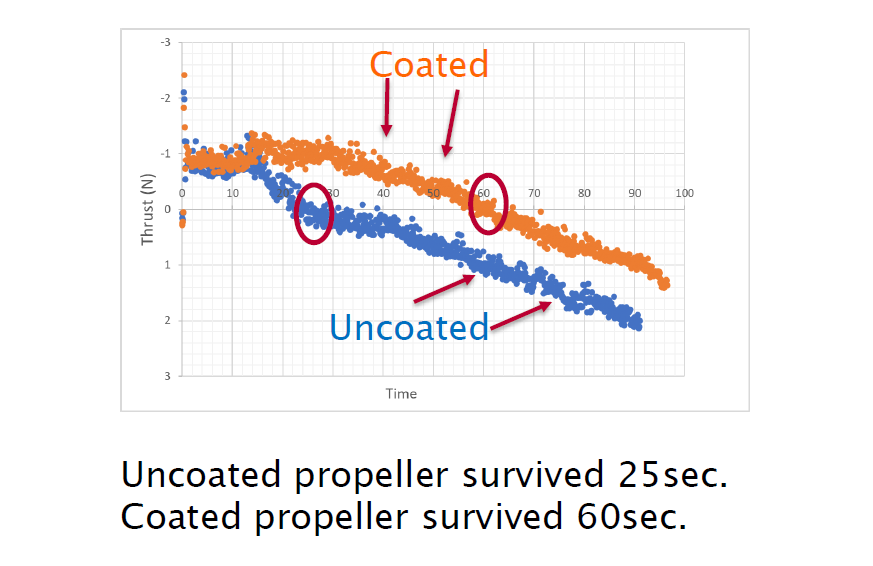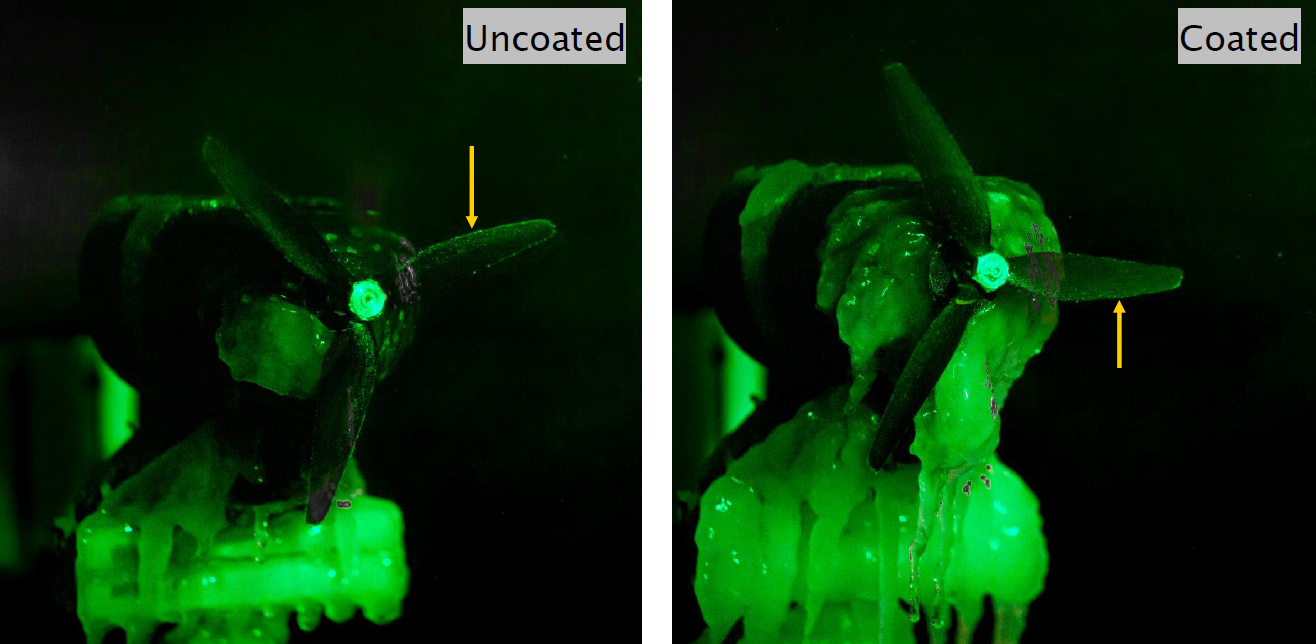To estimate the behaviour and performance of UAVs in all types of situations, reliable standard test measures are necessary. Several partners, including Sirris, started working together to develop a test method for the performance of UAVs when exposed to wind and ice.
Understanding the behaviour and performance of UAVs (unmanned aerial vehicles) or drones under unfavourable weather conditions and harsh flying conditions, of which icing is the most critical, is prerequisite for developing meaningful test protocols for validation and certification of these flying systems. For this reason, several research partners, in collaboration with WindShape, a Swiss manufacturer of test equipment for drones, decided to develop a test method for investigating the performance of drones under wind and icing conditions. The first steps were taken in partnership to develop a method for characterizing the performance of the propeller of this type of drone under icing conditions in a laboratory environment.
Realistic test set-up
The research, a collaboration between WindShape, the HES-SO - Haute Ecole Spécialisée de Suisse occidentale [University of Applied Sciences and Arts of Western Switzerland] - and Sirris, was performed in the large climate chamber at Sirris, where the formation of both ice and frost can be generated by a series of 25 water nozzles in combination with a wind setup consisting of a large number of fans that can be activated on demand to generate the desired winds of variable intensity and direction.
A test set-up was designed to characterize ice accretion on the propulsion system of the drone and its performance. The propellers were characterized on a test bench with a thrust stand, developed by Tyto Robotics, to measure the thrust, motor torque, motor speed, electrical power and weight of accreted ice.
In addition, the ambient temperature, humidity and wind speed were monitored individually. A visual analysis of ice accretion on the propeller using a stroboscope and a camera made it possible to correlate the performance decrease with the proportion and morphology of the accreted ice on the propeller.
A total of 21 tests were performed using the varying levels of propeller speed, wind speed and water pressure. Each test was conducted once using a standard propeller and then using a similar propeller provided with an anti-ice coating. All tests were conducted at a temperature of -10 °C.
Satisfactory results
Ice accumulation on the propeller followed a similar pattern during all tests. The coated propeller was found to maintain its thrust approximately four times longer than the uncoated propeller: ice formation starts after a few seconds of spraying, after which considerable ice accretion is visible after 20 seconds; complete loss of propeller thrust occurs at about 60 seconds, and shedding of the accumulated ice at around 80 seconds.
It is apparent from the tests that the researchers have developed a realistic and reliable test set-up for studying the performance of drones under icing and windy conditions.







